- Bottom of the Ninth
- Posts
- 🦾 How an NBA Trainer (Accidentally) Invented Arm Sleeves
🦾 How an NBA Trainer (Accidentally) Invented Arm Sleeves
Plus, why do NFL refs wear straps around their hands?

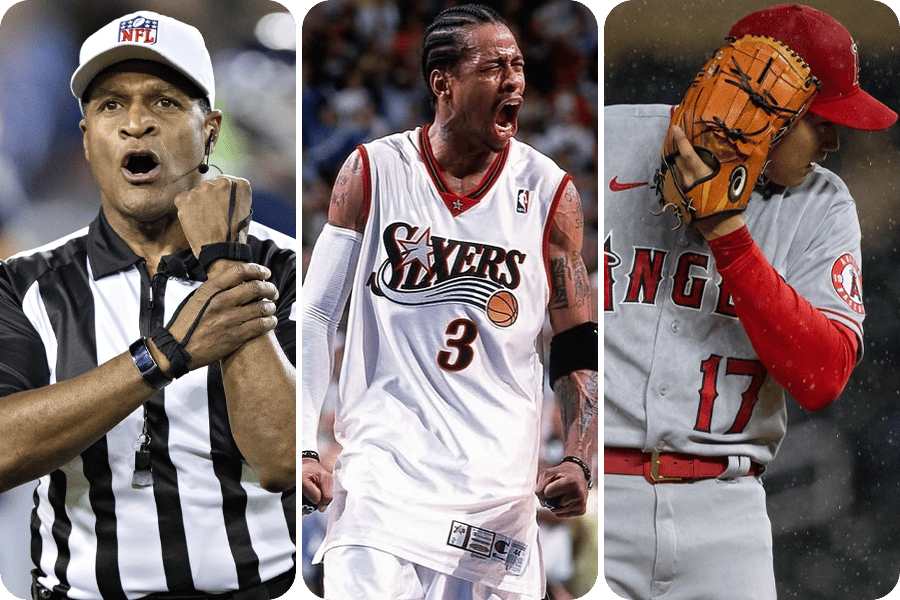
The more things change, the more they stay the same.
The Italian mafia is involved in rigging NBA games in a crime bust that involves 30 people across 11 states? Sounds like a plotline straight out of a 1970s Scorsese flick, but no… that’s what actually seems to be happening right now.
In today’s newsletter:
🗞 The Big Story: Why do NFL Refs Wear Straps on Their Hands?
📉 Biggest Loser: How an NBA Trainer (Accidentally) Invented Arm Sleeves
🏆 Winner’s Circle: Meet the Magicians Who Replaced Baseball’s Oldest Tradition
🗞 The Big Story
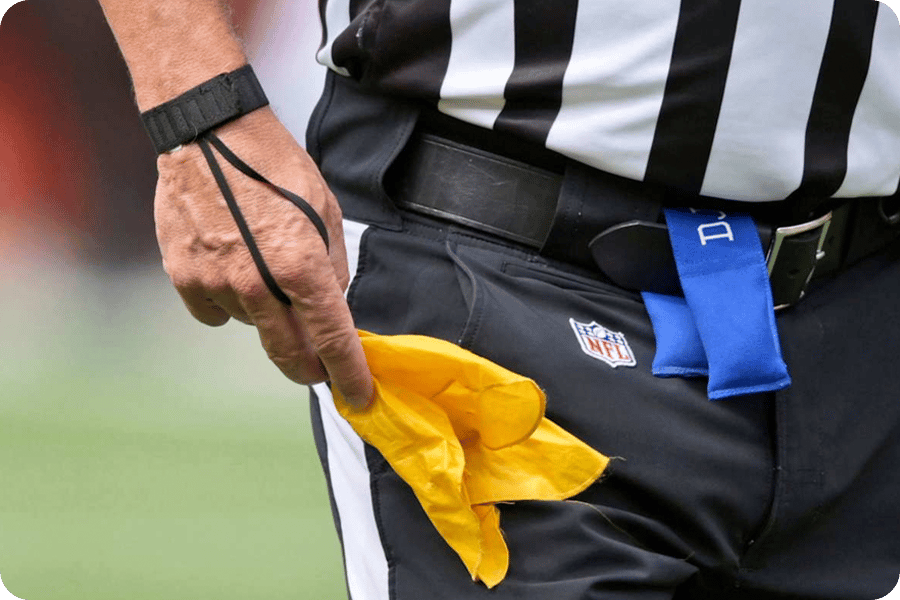
Why do NFL referees wear straps on their hands? Well, it’s actually a low-tech solution to one of the most high-stakes problems in football. Let’s break it down.
Background: Most fans might not realize it, but all seven officials on the field aren’t actually watching the ball. Instead, each official has a specific assignment, ranging from watching players’ feet along the sideline to looking for holds along the offensive line.
And even though fans love to complain about how bad NFL officials are, according to the league, they’re apparently accurate on nearly 99% of all calls across the more than 43,000 plays that are run in a given season.
Even though each official is looking for something different during a play, there are a few responsibilities that fall equally across all seven members of the crew because they’re just too important to mess up.
Which is how we got this thing.
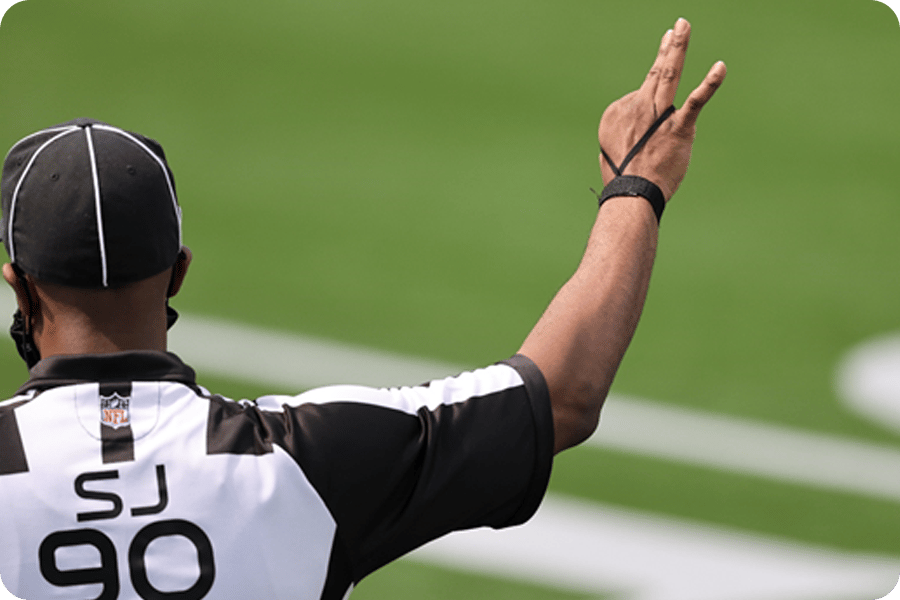
Dual Purpose: On the surface, this strap might not look like much, but it actually serves two incredibly important purposes:
1) Tracking which hash mark the ball was just snapped from.
This is helpful in case it has to be re-spotted due to an incomplete pass or a penalty. If an official is wearing the strap on their left hand, then:
Pinky = left hash
Thumb = right hash
2) Keeping track of what down it is.
This is typically done on the right hand, where:
Index finger = 1st down
Middle finger = 2nd down
Ring finger = 3rd down
Pinky = 4th down
But why is something so simple the whole crew’s responsibility?
Well, it’s likely because back in 1968, during the only recorded incident of NFL officials forgetting the down, the whole crew got suspended for the remainder of the season after commissioner Rozelle called them “equally responsible” for keeping track of something so basic yet so important.
Kind of crazy that someone’s job can rely on a few rubber bands.
📉 Biggest Loser
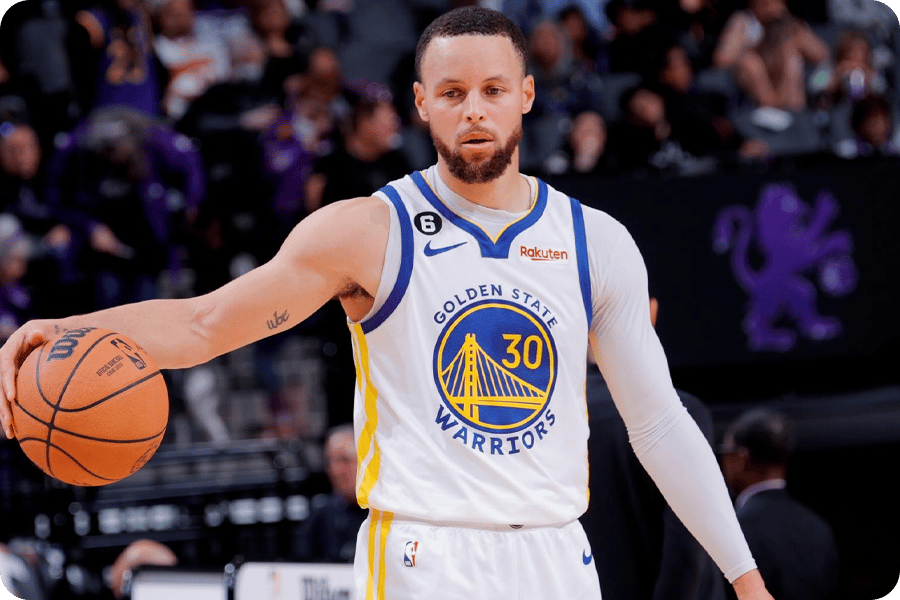
Why do NBA players wear arm sleeves? Well, it all actually happened completely by accident thanks to a guy you’ve probably never heard of.
Background: Back in 2001, Sixers guard Allen Iverson was dealing with a nagging elbow injury called bursitis. This is when the fluid-filled sac that cushions the elbow joint becomes inflamed, leading to a painful bump on the elbow. This injury is easily treated by surgery, but not wanting to miss any time in the middle of the Sixers’ season, AI went to team trainer Lenny Currier for a temporary solution —and what he came up with would change basketball forever.
V1.0: In an effort to reduce the swelling on Iverson’s elbow, Currier cut down part of a cotton compression bandage that’s typically meant to go underneath a cast and had him wear it during the team’s January 21st game against Vince Carter’s Toronto Raptors.
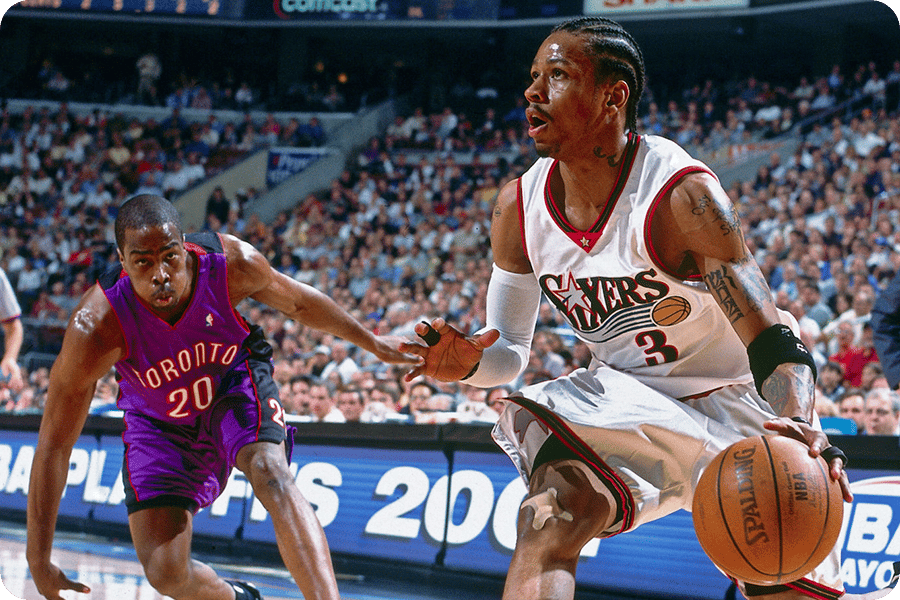
Allen Iverson scores in the 76ers 110-106 loss (1/21/2001)
And even though the 1-seed Sixers would lose in overtime, Iverson exploded for 51 points while wearing the bandage sleeve and went on to average 35 points per game for the rest of the season.
Copy-Cat League: In fact, in the middle of the Sixers’ run through the East, a small sports apparel start-up called Under Armour reached out and offered to hand-stitch Iverson custom-colored compression sleeves for the rest of the season with their new nylon performance material so he could match his uniform every night.
And even though Iverson’s iconic 2001 season fell short in the Finals, he already made his mark on basketball culture forever. Because by the next season, players around the league and across other sports started rocking what has come to be known as the “shooting sleeve.”
“Damn, I messed up by not copyrighting that.” - Allen Iverson
🏆 Winner’s Circle
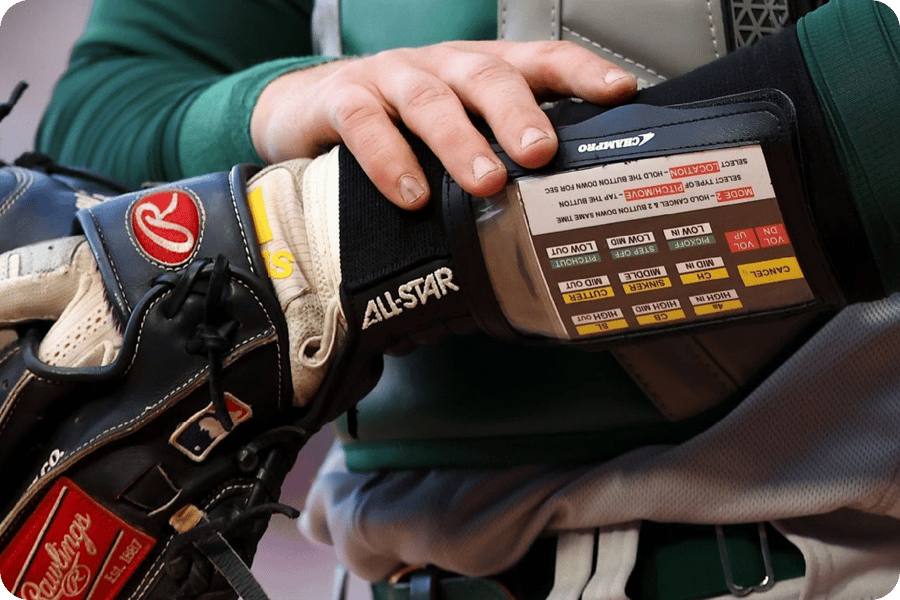
How did two magicians manage to replace one of the oldest traditions in baseball?
Pitch Calling: See, from the earliest days of the sport, catchers and pitchers have needed a way to communicate, and for over 150 years, the way they’ve done that has barely changed at all.
And even though sign-stealing was considered “part of the game” throughout the 21st century, once the Houston Astros were caught using video cameras and trash cans to tip their opponents’ pitches, executives, players, and fans alike knew something had to change.
But I don’t think anyone could have predicted where that change would come from.
Magicians By Night: Meet John Hankins and Craig Anthony, both men graduated from college with degrees in electrical engineering; however, John went on to become a patent lawyer, while Craig got his MBA and went into business. Still, the two were friends largely thanks to their shared love for magic.

Co-inventors of PitchCom, John Hankins (left) and Craig Anthony Filicetti (right)
However, John and Craig weren’t just practicing magicians; thanks to their engineering backgrounds, they had started designing and selling specialized tech products for other magicians to use in their acts.
However, when the story broke in 2019 that the Houston Astros had been stealing signs during their World Series run, John and Craig called each other with the same idea:
What if they used their combined backgrounds in engineering, law, business, and magic to solve sign-stealing in MLB for good?
Their Solution: So, the two immediately got to work making slight adjustments to on-stage communication devices that they had been using in their acts for years, eventually settling on a 9-button device that would be worn around a catcher’s wrist and have the ability to send encrypted pitch-calls directly to a speaker tucked inside a pitcher’s hat.
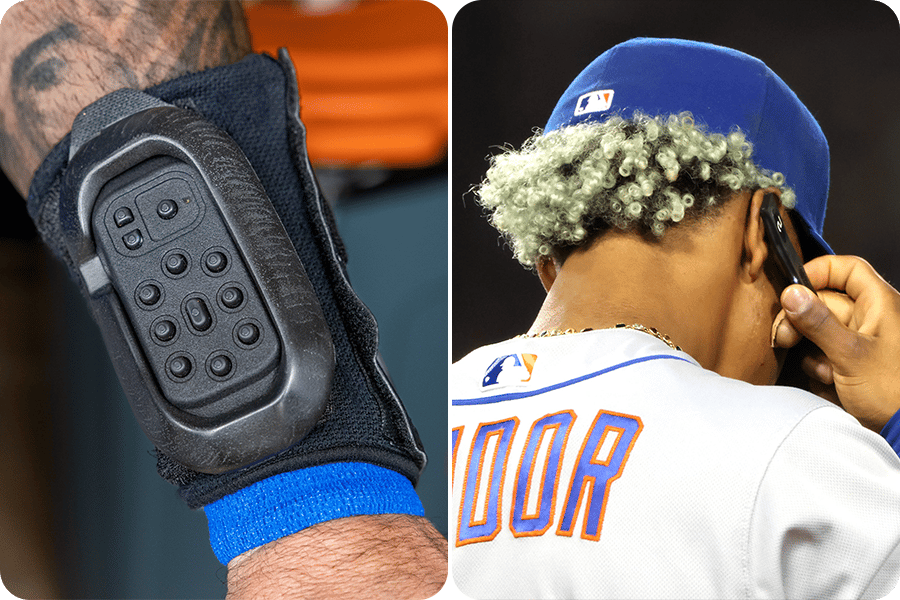
Catcher (right) signals pitches with the PitchCom, which is sent to a speaker inside the pitcher’s hat
This device, which you may know as the Pitch Com, was first tested in the minors in 2021, but by 2022 every MLB team was using one, not only because it allowed the pitcher and three infielders to secretly get their signals, but it also helped speed up the pace of play and even allowed for automatic translation between pitchers and catchers who might not speak the same language.
I guess good ideas really can come from anywhere.
⏱️ In Other News
When you refer new readers to the Bottom of the Ninth, you win exclusive prizes.
➡️ Here is your unique link to share: https://bottom-of-the-ninth.beehiiv.com/subscribe?ref=PLACEHOLDER
You’re currently at 0. That’s only 1 away from receiving a Bottom of the Ninth Sticker!
*Please do not use fake email addresses — they will not qualify as referrals. Thank you!
👋🏻 Happy Friday!
If you’ve ever wanted to work in sports, now would be a great time to check out our Sportonomics podcast feed.
We just released a great episode with the NBA’s youngest broadcaster, Carlo Jimenez, about his ascent in the industry.
And next week, we’re talking with Brian Davison (former Nike Exec), who just started a company to help mentor young professionals in sports!


Reply